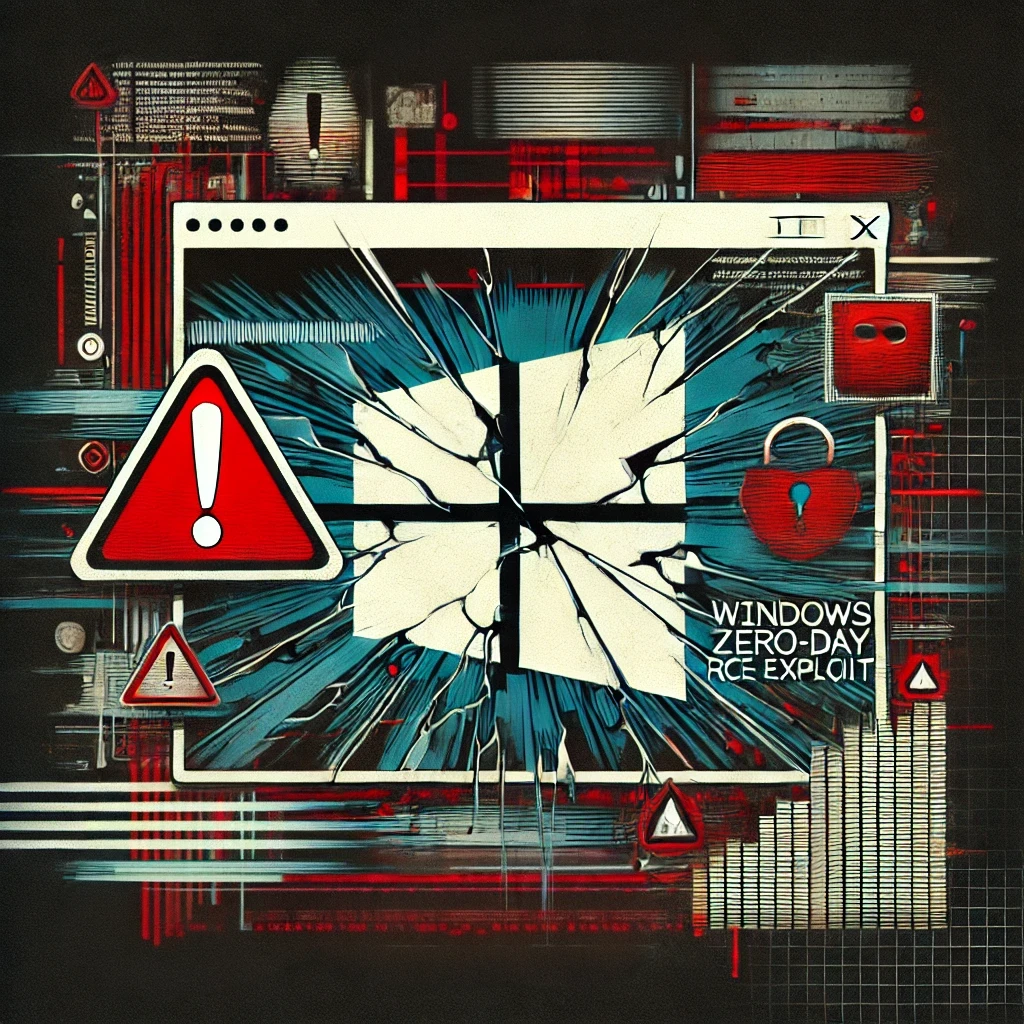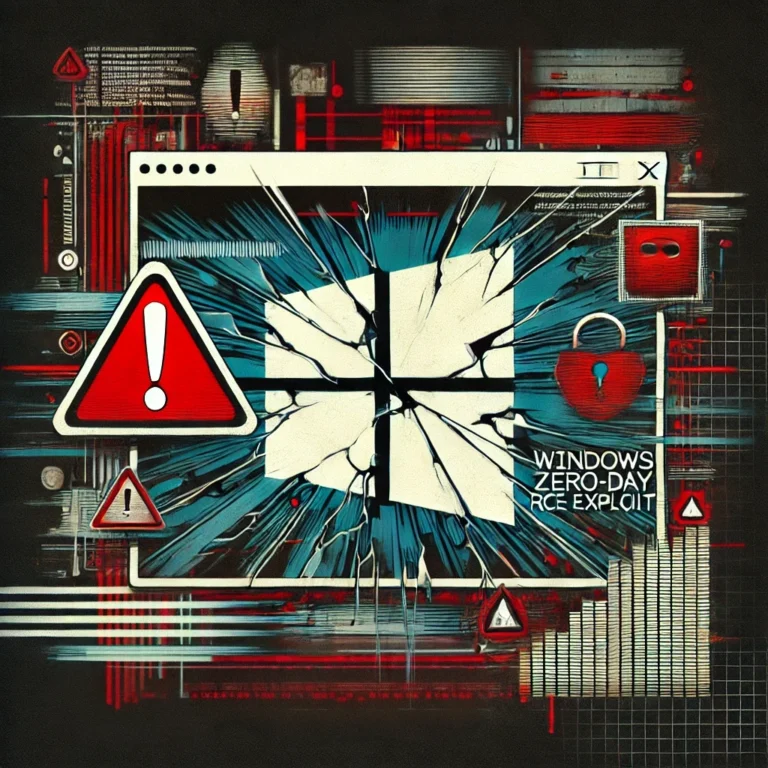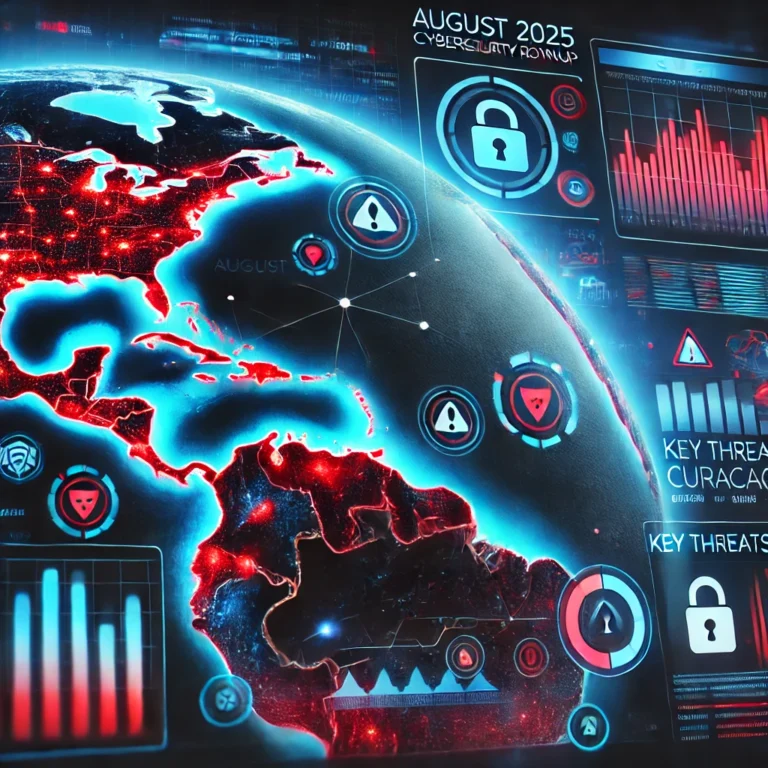
Windows Zero Day Remote Code Execution bug for sale on dark web
What’s Happening?
A threat actor recently advertised a Windows zero‑day remote code execution (RCE) exploit on the dark web, claiming it targets fully up‑to‑date Windows 10, Windows 11, and Windows Server 2022 systems. The exploit promises powerful capabilities: SYSTEM‑level shell access, no user interaction needed, and the ability to evade major security protections like ASLR, DEP, and Control Flow Guard.
Key Highlights:
- Price tag: $125,000.
- Stealth features: Bypasses antivirus and endpoint detection/response tools.
- Ease of execution: Operates over the network without any user prompt.
- High reliability: Claimed success rate exceeds 95%.
If legitimate, this exploit represents one of the most dangerous kinds of threats—unauthenticated, remote attacks that require zero user involvement.
Why This Matters
What Is a Zero‑Day Exploit?
A zero‑day attack refers to an undisclosed software flaw—the vendor has had zero days to address it before attackers use it. Such vulnerabilities are rare but extraordinarily powerful in the hands of cyber actors.
By leveraging a zero‑day, attackers can slip past traditional defenses and initiate seamless attacks. The stakes are especially high for exploits enabling SYSTEM‑level access remotely.
Zero‑day exploits can fetch hefty sums. Governments, intelligence agencies, and cybercriminals all participate in exploit marketplaces, with prices jumping into six or even seven figures for sophisticated vulnerabilities—especially those enabling remote, unauthenticated execution in widely used systems.
How Does This Compare to Other Recent Zero‑Days?
Microsoft’s Patch Tuesday (August 2025)
On August 12, 2025, Microsoft patched over 107 vulnerabilities—13 critical, including nine RCEs—among them a Serious Zero‑Day in Kerberos (CVE‑2025‑53779), which could enable domain administrator access if certain permissions were already compromised.
Earlier in 2025, critical zero‑day flaws in Microsoft SharePoint (CVE‑2025‑53770 and CVE‑2025‑53771) were actively exploited on on‑premise servers—over 85 servers compromised globally. Emergency patches were issued, and enterprise users were urged to patch immediately.
What Makes the Windows RCE Offer Particularly Concerning?
- Fully Patched Targets — Unlike many exploits that prey on unpatched systems, this one claims to target Windows versions already updated.
- User Interaction Not Required — The exploit is network‑based and silent, lowering the barrier for attackers.
- Stealthy Execution — By skipping key defenses like ASLR, DEP, and CFG, it can bypass most modern protection layers.
- Proven Track Record of Sale Prices — Exploits with these characteristics rarely come cheap: $125K aligns with the going rates for high‑value remote exploits.
Who Might Be Targeted?
- Enterprises and Governments running Windows Server environments.
- Advanced Persistent Threat Groups (APTs) seeking stealthy access to corporate networks.
- Ransomware Operators looking for deep access without detection.
- Cybercrime Syndicates aiming for high return on investment by selling to other buyers.
What You Should Do Now
Even though it’s not confirmed that this exploit has been used in the wild, the claim alone is cause for heightened vigilance.
- Ensure All Windows Systems Are Up to Date
Always install the latest Microsoft updates—especially security patches like those from August 12, 2025. - Implement Advanced Threat Detection
Use layered defenses including tamper protection, network protection, and EDR in block mode—especially for high‑value targets. - Limit Network Exposure
Restrict unnecessary remote access. Segment critical systems and use zero‑trust principles. - Monitor Network Behavior
Watch for unusual traffic or system behavior that could hint at exploit attempts. - Stay Informed
Keep up with cybersecurity news—Zero‑days evolve rapidly, and awareness is the best defense.
Wrapping Up
The listing of a $125K Windows zero‑day RCE exploit capable of bypassing modern protections—and claiming SYSTEM‑level access without user interaction—is a serious red flag for the cybersecurity community. While it remains unverified, it fits a troubling pattern of high‑stakes exploits targeting critical infrastructure.
Compare this with other real-world zero‑day threats like the Windows Kerberos RCE, patched in August 2025, SharePoint attacks, and WinRAR compromise campaigns—one constant emerges: keeping systems patched, segmented, and monitored is vital.
Looking for a tool to cut through the noise?
Sign up for alerts from reputable security providers—such as Microsoft, ESET, or Threat Intelligence platforms—and stay one step ahead of threat actors.
Sources:
Cyber Security News – Original Article
https://cybersecuritynews.com/windows-zero-day-rce-exploit-for-sale/
Tom’s Guide – Microsoft August 2025 Patch Update
https://www.tomsguide.com/computing/online-security/microsoft-just-fixed-over-107-flaws-including-one-serious-zero-day-update-your-pc-right-now
Windows Central – WinRAR Zero-Day Exploited by Hackers
https://www.windowscentral.com/software-apps/new-winrar-zero-day-pc-vulnerability-exploited-by-hackers-what-you-need-to-know
Bleeping Computer – SharePoint Zero-Day Attacks
https://www.bleepingcomputer.com/news/microsoft/microsoft-sharepoint-zero-day-exploited-in-rce-attacks-no-patch-available/



